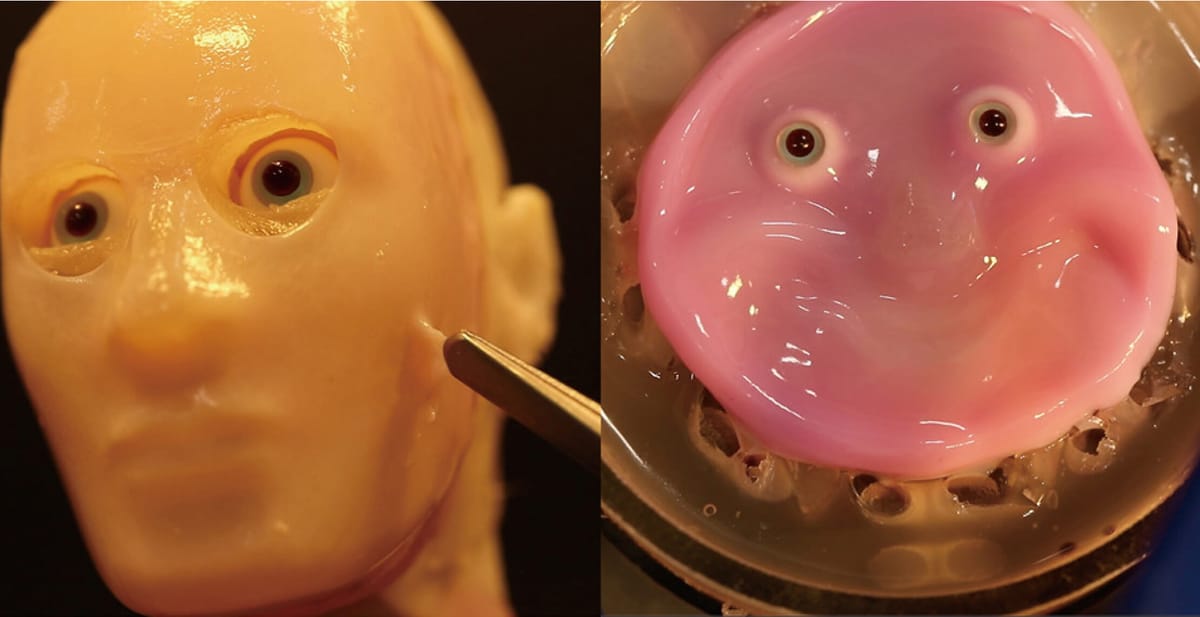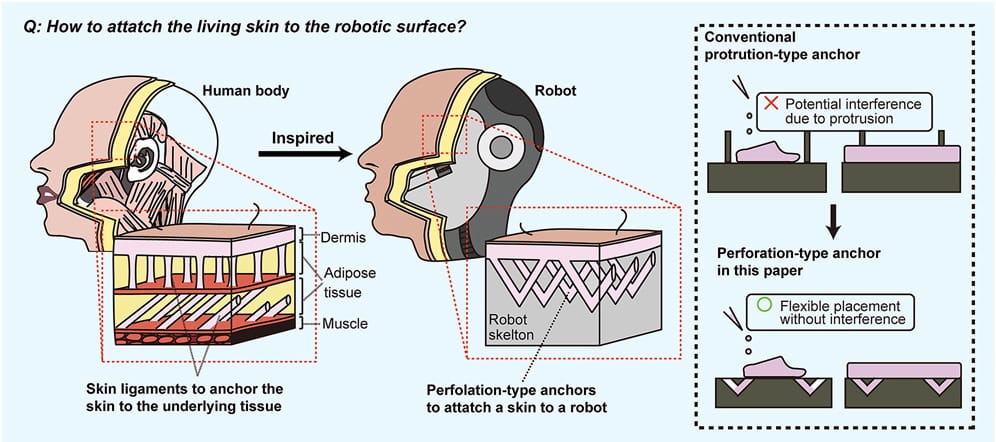
University of Tokyo researchers have created a way to cover robots with artificial "living", self-healing skin. This advance brings us closer to more human-like robots that can adapt to their environment.
The team, led by Dr. Shoji Takeuchi, developed "perforation-type anchors" inspired by human skin ligaments. These tiny structures let cultured skin bond securely to robotic surfaces, mimicking how our skin attaches to our bodies.
"We've recreated how human skin sticks to and moves with our bodies, but for robots," Takeuchi explains. "This creates a more natural, flexible covering that can handle complex robot movements."
The anchoring method uses small V-shaped holes in the robot's outer layer. Researchers then apply a collagen gel containing living cells, which fills these holes as it sets. They use a plasma treatment to make the anchor surfaces more water-friendly, ensuring the gel penetrates fully.

This approach improves on earlier attempts to give robots skin-like coverings. The perforation anchors create a smooth surface without visible attachment points. They also let the skin move naturally as the robot moves.
Most importantly, the living tissue can potentially repair itself. "Small scratches or damage could heal on their own," says Takeuchi. "This is crucial for robots working in unpredictable settings where wear and tear happens."
To illustrate the versatility of their method, the researchers successfully covered a 3D facial mold with a skin equivalent. The process involved pouring a pre-gel dermis solution into the mold, allowing it to gel and mature. The result was a seamless and lifelike skin layer, securely attached to the facial mold via perforation-type anchors. This breakthrough highlights the potential of these anchors in creating complex, three-dimensional biohybrid structures.

Taking the innovation a step further, the team constructed a robotic face covered with a dermis equivalent. This robotic face could express a smile, thanks to the actuation of the dermis via the perforation-type anchors. The anchors allowed for precise and controlled movements, mimicking the natural motions of human facial muscles. This demonstration underscores the potential for creating robots with highly realistic and expressive features.
This research opens up new possibilities for robotics and how humans interact with machines. Robots with lifelike, self-healing skin could work in healthcare, entertainment, and more.
The researchers have also expressed interest in substituting cultured muscle tissue for the mechanical actuators. This could pave the way for even more impressive biomimetic robots.
However, let's not get too far ahead of ourselves. There are many challenges that remain before we see robots with truly human-like skin. For example, the current version lacks features like sweat glands or hair. Researchers also need to figure out long-term maintenance and ensure uniform thickness of the skin equivalent on complex surfaces.
Despite these hurdles, Takeuchi and his team see a bright future. "We're starting a new era in robotics," he says. "The line between artificial and biological is fading. It's exciting and a bit unnerving, but we need to explore this frontier."

